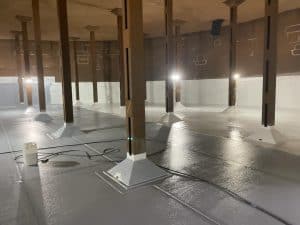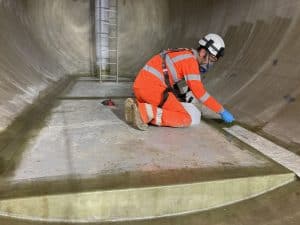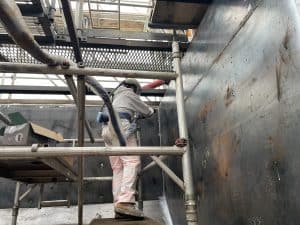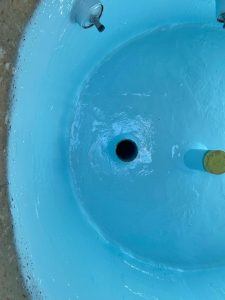Surface Preparation
Surface preparation is essential to the success of a coating system, providing the foundation for the performance and longevity of the coating.
Our Services
Get a Free Quote
Surface preparation is a crucial aspect when it comes to applying a new protective coating system to structures. It plays a paramount role in determining the overall success of the final result.
With extensive experience in surface preparation and performance coatings, we can tailor your project’s most suitable preparation approach. We also have the facilities and equipment to complete on or off-site surface preparation.
When it comes to surface preparation, our experienced team ensures that every project is handled with utmost care and expertise. We offer tailored solutions, considering all aspects and requirements, to provide the most suitable approach for each unique project. Our comprehensive services include:
Shot Blasting
Shotblasting blasting is an effective surface preparation technique that involves using a high-pressure stream of abrasive materials to clean and roughen surfaces before applying coating systems. It is most commonly used on steel marked by mill-scaled and rusted surfaces.
The scale of abrasion can be completed to a variety of levels, but the most common is SA2.5.
High Pressure Jetting
High-pressure jetting is a powerful surface preparation technique that uses a high-pressure stream of water to clean and prepare surfaces.
High-pressure jetting is typically used to remove salts, fouling, loose paint and other contaminants.
Surface Cleaning
urface cleaning in surface preparation refers to the process of removing all contaminants, such as dirt, grease, oil, rust, and other debris from a surface.
Surface cleaning is essential because any foreign material on the surface can interfere with the adhesion of the coating, reducing the effectiveness of the treatment and compromising the quality and durability of the final product.
Vacuum Removal Systems
The vacuum removal process involves using a specialized vacuum system to suction away loose particles, such as dust, grit, or water, from the surface of the material.
For more information about our tank lining services please contact us.

Our Work

Epoxy Coating for Aviation Fuel Facility
Epoxy Coating for Aviation Fuel Tank THE CHALLENGE The client’s aviation fuel tanks required a new lining system as part of their scheduled maintenance. While

Polyurea Coating for GRP Tank
Polyurea Coating for GRP Tank THE CHALLENGE The clients’ 6 Glass Reinforced Plastic (GRP) tanks had begun to show signs of cracking and damage, due

Digester Tank Renovation
Digester Tank Renovation THE CHALLENGE A digester tank for a major water supplier was severely damaged, with corrosion leading to water ingress. Due to the

Epoxy Coating for Buried Concrete Water Interceptors
Epoxy Coating for Buried Concrete Manholes THE CHALLENGE The client was having difficulties with 5 concrete buried water interceptors. Originally, there was no protective coating
